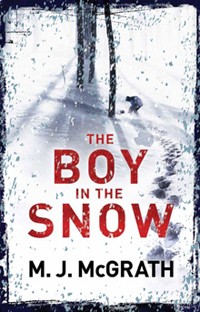 Half-Inuit, half-white, Edie Kiglatuk is a native of Ellesmere Island, in the furthest northern reaches of Canada. However this sequel to the very excellent White Heat takes her to Alaska. Ex-husband Sammy is racing in the Iditarod, an epic dogsled race from Anchorage to Nome, up on the Arctic Ocean. Hundreds of miles from home, Edie is in Anchorage as part of Sammy’s support team. Waiting at the end of the course in Nome is Derek Palliser, the Native Canadian cop who helped her solve the murders in White Heat.
Half-Inuit, half-white, Edie Kiglatuk is a native of Ellesmere Island, in the furthest northern reaches of Canada. However this sequel to the very excellent White Heat takes her to Alaska. Ex-husband Sammy is racing in the Iditarod, an epic dogsled race from Anchorage to Nome, up on the Arctic Ocean. Hundreds of miles from home, Edie is in Anchorage as part of Sammy’s support team. Waiting at the end of the course in Nome is Derek Palliser, the Native Canadian cop who helped her solve the murders in White Heat.
Even though the Alaskan March is extremely cold, they consider the territory to be southern – everyone eats burgers, there are no seals to hunt, and far too many trees. And it’s among the pines that Edie finds the frozen body of a baby boy after her snowmobile breaks down.
She is interviewed by a cop called Detective Truro and finds his line of questioning unsatisfactory. He wants to pin the baby’s death on a religious sect called the Old Believers. An offshoot of Russian Orthodoxy, their communities are based in remote parts of Alaska. They stick to themselves and to the old ways a little bit like the Amish, and this breeds suspicion. The police arrest Peter Galloway, a man who married into the group. Meanwhile the dead boy’s teenage mother is put into a mental institution, ostensibly to help her cope with the trauma. The mayor of Anchorage, Chuck Hillingberg and wife Marsha are keen to bury the case, because Chuck is running to be state governor. So Edie herself starts seeking justice for the boy on her own.
Then another frozen baby turns up. Like the first, he’s found in a brightly painted little wooden spirit house. Unlike the first, this child had Down’s Syndrome. A media storm ensues, and with Alaskans accusing the Old Believers of devil worship, Hillingberg puts even more pressure on Police Chief McKenzie to snuff out the investigation and put Galloway away. As both Edie and Derek Palliser are drawn into the case, Sammy is left with little support as he races hundreds of miles across the snow and ice towards Nome.
What they begin to uncover is a complex web of deceit. On the one hand, there are the political machinations of the gubernatorial campaign which might remind you a little of The Killing. On the other, there are the developers who want to force the Old Believers off a strip of land to build a tourist complex. Derek also sniffs out a child prostitution ring that has been smuggling girls in from Russia, and there’s some link to an ominous hunting lodge called… ‘the Lodge’. To say more might spoil the labyrinthine plot which twists and turns, and you never quite know what to expect as each dark, depressing layer is peeled back.
Though complicated, the book continues in McGrath’s compelling style and Edie Kiglatuk remains a unique, irreverent and highly resourceful sleuth. The fish-out-of-water aspect reveals new sides of the heroine, but also enables McGrath to explore another northern culture – that of Alaska. However The Boy in the Snow doesn’t quite have the polish, or the atmosphere, of White Heat. The characters frequently bite their lips, for some reason – you could almost base a drinking game on it. In one scene, a man about in an airplane that’s out of control remembers rocking in his cradle as a baby – but does anyone really recall being a baby?
These few misgivings aside, it’s a page-turning read and deals with a whole range of tough issues. To enjoy The Boy in the Snow, you’ll benefit from having read White Heat. Some of the strange behaviour of the main characters, and several references, will make more sense if you have. The brilliant finale sees Edie Kiglatuk at her best, up against both man and nature in a gripping, life and death struggle that could leave her quest for justice, Sammy’s sled challenge, and three Native Canadians frozen in the snow. I’m hoping there’s another book in the series, and that it’ll return to the Arctic barrens.
Mantle
Print/Kindle/iBook
£8.23
CFL Rating: 4 Stars








